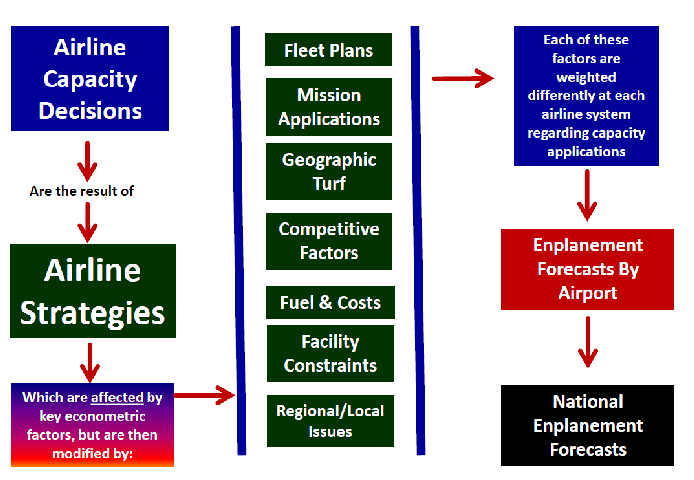Time To Move Out of The Past
Traditional Methodologies Went Obsolete Two Decades Ago
Here's hard fact: The traditional forecast methodologies and airport classification systems used by the Federal Aviation Administration are based on an air transportation industry that no longer exists.
To start, the assumption that air traffic volume is a simple outcome of the interplay between econometric factors - population, buying power, demographics, CPI, fuel prices, etc., is no longer valid. This approach could not and did not forecast massive growth at points such as VPS, or at MYR, or the establishment and dismantling of hub operations at SJC, RDU and BNA. And it can't assist aviation planners, either.
Today the major foundations of air traffic are based on decisions made based on often subjective corporate strategies. The crucial factor for aviation planners is to have a grasp and understanding of how airlines will plan for the future. It includes more than just demographics - it demands understanding and projections of corporate, strategic, fleet, and competitive factors. These require a deep understanding of airline industry trajectory.
This is what sets Airports:USA and Boyd Group International ahead.
Monitoring Traffic Demand Dynamics
Today, there are several volatile factors - many based on subjective corporate decisions and strategies - that determine the levels of passenger enplanements - and levels of passenger demand - across the USA.
Unlike FAA and academic approaches to enplanement demand, Airports:USA recognizes that the interaction of these factors will drive how, where, and with what equipment will be applied. Airlines no longer - and, arguably, never did - simply add capacity on the basis of raw economic shifts in one region or another. Today, air traffic levels are more the result of airline decisions than any other factor.

This is what sets Airports:USA apart. We review all of the factors that can affect regional and local air traffic, and report the findings as-is and where-is.
